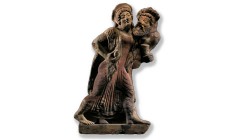Virtually gone! The Internet market in antiquities
Brodie, N. (2017) ‘Virtually gone! The Internet market in antiquities’, in Proceedings of the 6th International Conference of Experts on the Return of Cultural Property. Seoul: Overseas Korean Cultural Heritage Foundation, pp. 190–204.
Since the establishment of eBay in 1995, online sales of antiquities and other cultural objects have escalated progressively, both in monetary value (BARKER 2000; BRUHNS). The means by which sales can be conducted online have similarly diversified and multiplied. By 2016, the Internet market had grown to comprise a baffling disorder of websites and web portals offering for sale cultural objects from every country in the world (BRODIE 2014; 2015). Most objects were being sold without any reliable documentation of provenance (OWNERSHIP HISTORY) or variable evidence of find spot, and had likely been obtained through illegal and undocumented excavation or stolen from museum or other institutional collections, before being traded in contravention of national and international laws. e Internet offers easy market access for a much larger number of customers than was previously the case, and cultural objects sold on the Internet are generally of poorer quality than those that have been traditionally traded. With more people buying more material, the expanding Internet market is believed to have caused an upsurge in the extent and intensity of looting of cultural sites and trafficking of cultural objects.
